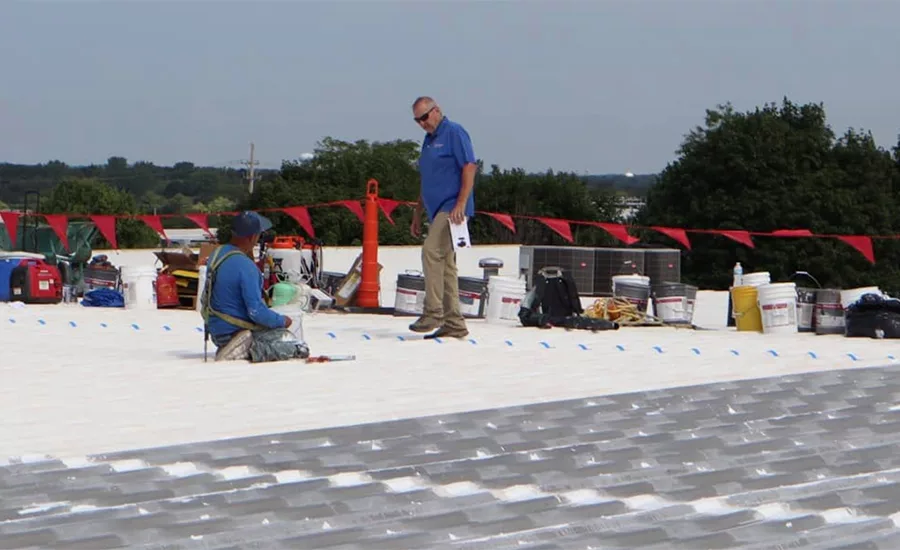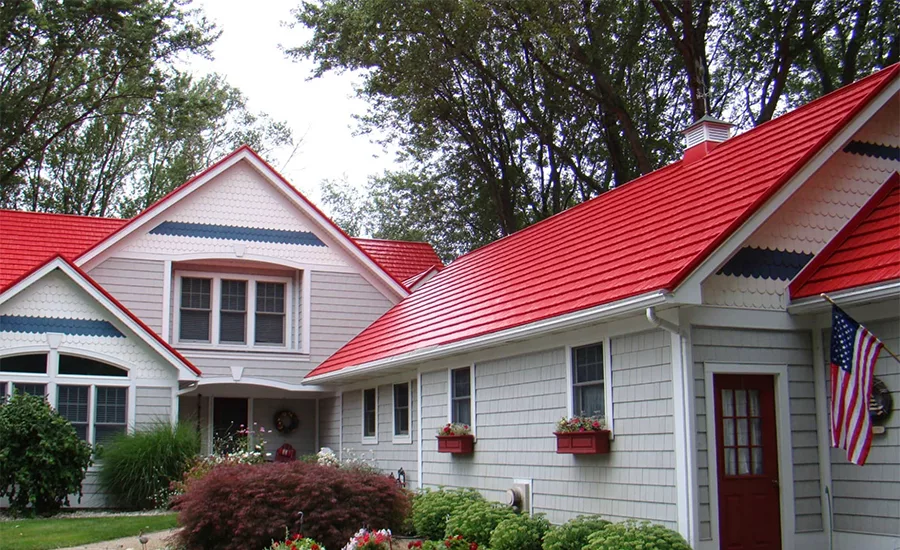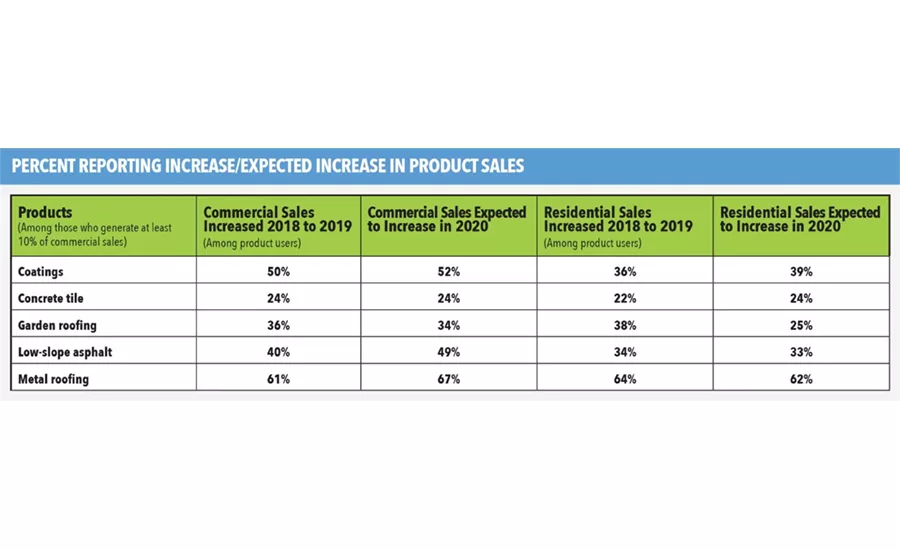Marked for Metal
Metal roofing continued to grow in markets around the country before the pandemic, and outlook remains strong

Metal roofing is projected to grow faster than any other product offering in the roofing industry.



From hurricane-battered coastlines to the gusty plains of Middle America, metal roofing is changing the landscape of neighborhoods and economic centers in communities across the country. And roofing contractors are learning to react quickly in order to catch on to the newfound demand.
Metal roofing is projected to grow faster than any other product offering in the roofing industry, according to supporters in the installation, distribution and manufacturing sectors. In commercial markets, contractors are finding success pushing metal roofing solutions to facility owners concerned about lifecycle costs and threatening environmental regulations.

The longevity and new design styles of metal roofing products are expanding profit margins for roofers in the residential and multi-family markets as well. Within the past four years, multiple manufacturers — including major asphalt shingle-makers — expanded their product lines with metal offerings with strategic acquisitions.
That, with a particularly alarming series of active storm seasons, has put metal roofing in a coveted spot.
About 62% of contractors said they expect residential metal roofing sales to increase in 2020, while 67% expect commercial metal roofing sales to increase.
Metal Now
According to RC’s 2020 Annual Roofing Report — designed with survey data conducted by Clear Seas Research — roughly 72% of roofing contractors indicated they offered metal roofing. That was second only to single ply (78%) and just above steep slope asphalt (62%). The data also showed that a significantly higher number of contractors reported using metal roofing in the South compared to all other regions.
Metal is also gaining popularity in the residential roofing sector. Roughly 69% of survey respondents that identified as largely residential contractors said they’re involved with metal roofing products. That trailed commercial contractors (76%). Notably, the survey data suggested there’s tremendous opportunities for growth.
Of the overwhelming number of residential contractors that use metal, they said it only accounted for 16% of overall business. That number was a bit higher among commercial contractors at 18%. In terms of sales, metal is trending up. About 62% of contractors said they expected residential metal roofing sales to increase this year. It was a little higher among commercial contractors (67%).
Metal roofing offerings have been a source of growth even for established residential roofing contractors to branch off into the commercial realm. White Castle Roofing in Lincoln, Neb., opened in 1985 and has grown into a $22-million contractor last year, good for #65 on RC’s 2020 Top 100 Roofing Contractors List. It recently expanded with a commercial department that continues to grow — just recently adding several new employees both in the office and in the field.
“We have become our area’s go-to contractor for metal roofing, with technicians skilled in that subgenre, as well as new technology to custom-bend materials for projects,” said Kiley Eaton, White Castle’s marketing manager. “We are thrilled to see those investments paying off as the demand for metal roofing continues to increase.”
Other industry survey data shows similar results. Metal roofing for new home construction has doubled in the past year, and continues to enjoy an ongoing steady demand among the repair/remodel market segment, according to a recent report commissioned by the Metal Roofing Alliance (MRA). For new construction, market share doubled from 4% in 2018 to 8% in 2019. The repair/remodel market share for metal roofing held steady at 12% for 2019. Together, metal roofing is the second most popular type of residential roofing in the United States.
“Home builders have their finger on the pulse of what today’s homeowners want and the latest trends in the market,” said MRA Executive Director Renee Ramey.
She attributes much of the recent increased demand due to severe storms and the use of more resilient building products.
“As consumers become more educated about their options and gravitate towards building materials and practices that are resilient, sustainable and long-lasting, we’re seeing that reflected in what builders are choosing to use,” Ramey said.
More homeowners are learning about the benefits and beauty of metal roofing. Photo courtesy of American Metal Roofs.
Future Focus
Other factors driving demand for metal roofing include the increased adoption of residential solar systems and rising popularity of net-zero homes. As a stronger, durable and lighter-weight material that lasts for decades, metal is an ideal platform to outlast residential rooftop solar panels, and can help maximize a home’s energy efficiency to lower utility bills.
Design and style also play a major role in driving the demand for metal roofing. Overall, metal roofing offers more styles, colors and design options than any other type of roofing material. Since 2015, the annual Dodge report has shown an increase in the popularity of metal roofing styles — including those that mimic shingles, shake, tile and slate — from 22% to 34% for 2019 in the repair/remodel market. The use of higher-end materials such as copper has also increased from 5% in 2015 to 9% in 2019.
While the impact of hurricanes Irma and Harvey (combined $175 billion damage) in 2017 — followed by Hurricane Michael ($25 billion) in 2018 — sparked a new demand for metal in the South, recent data shows a strong preference in the Mid-Atlantic region as well. Yet there is still room for improvement. While the data shows the popularity of metal roofing is on the rise, many regions prone to other dangers, such as wildfires, have been slower to catch on.
According to the MRA, as knowledge of metal roofing benefits continue to grow, so too will its market share, especially in regions grappling with severe climate threats.
“The need to re-evaluate and do things differently in light of a changing climate will continue to lead homeowners and builders to construct more resilient homes in every region,” said Dick Bus, president of ATAS International and the MRA. “As an MRA member, our goal is to make sure all homeowners, whether they are replacing their roof or building a new home, have the resources and information they need to make the best choice possible.”
Looking for a reprint of this article?
From high-res PDFs to custom plaques, order your copy today!






